Language Options
¡Hola! Puede encontrar información del proyecto traducido al español en el sitio web del proyecto, o llamar al 503-731-4128.
你好! 您可以在项目网站上找到翻译成中文的项目信息,或致电503-731-4128。
你好! 您可以在項目網站上找到翻譯成中文的項目信息,或致電503-731-4128。
Здравствуйте! Информацию о проекте, переведенную на русский язык, можно найти на сайте проекта или по телефону 503-731-4128.
Xin chào Quý vị, Quý vị có thể tìm thông tin của dự án bằng tiếng Việt trên trang mạng, hoặc gọi số 503 731 4128.
Stations
What is the Oregon Transportation Plan (OTP) and how does it impact me?
The OTP sets the vision for all the ways people and goods move including walking, biking, rolling, public transit, highways, railroads, freight and even planes.
Oregon’s transportation system provides access to jobs, healthcare, childcare, food, housing, recreation and leisure activities. It connects to quality of life, a vibrant economy, environmental health, and social equity.
From major bridge improvements to local sidewalk projects, an updated OTP will guide transportation investments for the whole state over the next 20-25 years.

Why is the plan being updated?
The last OTP was adopted in 2006 and much has changed! Updating the plan gives us a chance to incorporate what we have learned in more recent planning work, adapt to current conditions, and address an uncertain future.
It will help us to prepare for trends like climate change, widening social inequities, our growing population over age 65 and new technologies.
Who is involved in updating the plan?
Oregonians participating on project committees, work groups and focus groups represent the diversity of our transportation system, geographies and social demographics. They include experts in equity, safety, climate change, economics, and technology – as well as community leaders, organizations and you! Input from the public is incorporated throughout the plan update.
The Oregon Transportation Commission will ultimately adopt the new OTP. The new OTP will be informed by the Commission’s recently-adopted Strategic Action Plan which has three priorities—equity, a modern transportation system, and sufficient and reliable funding.
What is the project schedule?
By early 2023, we will reach the finish line with an updated plan. To get there, we will:
-
Study current and future transportation needs.
-
Use a range of scenarios to help develop a flexible plan that can adapt to a changing transportation future.
-
Consider the relationship between different forms of transportation—for example, biking and public transit—and the unique needs of different communities across the state.
-
Work with experts, our partners and the public to understand transportation priorities, recognize tradeoffs and gather feedback.
-
Outline priorities for transportation investments and establish an approach for implementing the OTP’s vision, goals and policies.
How will the plan support a more equitable transportation future?
Inclusive engagement process
We are committed to providing equitable and accessible opportunities to shape and influence the plan by reducing participation barriers in ways that are culturally responsive and motivate engagement. Reflecting the voices and perspectives of people and communities who have been historically excluded and underserved by transportation investments is a priority. These community members include:
-
People with low income, and/or people who are economically disadvantaged
-
Black, Indigenous and People of Color (BIPOC), or non-white identifying
-
Older adults, youth and children
-
People who speak non-English languages, especially those with limited English proficiency
-
People living with a disability
Plan development and outcomes
We recognize there are inequities in the transportation system and we are working from development to execution to ensure that these inequalities are acknowledged and distinctly addressed. From the project team to the decision makers, there are a diverse array of identities and lived experiences to inform the plan. In addition to gathering input from diverse communities, the team will develop an equity framework, informed by systemic barriers, that will guide the plan’s policies and strategies to ensure equitable outcomes.
For instance, in Oregon the pedestrian fatalities and severe injuries are higher in low income and BIPOC communities as shown below. The equity framework will highlight a barrier like this that needs to be overcome. We want your perspectives reflected in this equity framework. Share more in the survey below.
People
Our state is constantly changing and so are the people. Oregon's population has grown over 20% since 2000 and we expect continued growth. Below is a snapshot at our state's demographics from 2019.
Source: United States Census. 2019. (Click to enlarge)
Who is Walking and Biking?
Oregon has a reputation for being a friendly state for those walking and biking. According the US Census 2016 American Community Survey, Oregon has the highest mode share of bicycle commuters in the nation. Let’s take a deeper look at what it means to bike and walk across the state. Here is biking infographic sharing statistics between geography, gender, age, ability and socioeconomic differences.
Source: Oregon Bicycle and Pedestrian Plan. 2016. (Click to enlarge)
How Do We Get to Work?
Across Oregon, there are a variety of options to travel to work from driving to biking. Although, commuting preferences has changed since the pandemic, below is a look at getting to work in 2018.
Source: US Census American Community Survey (2014-2018). (Click to enlarge)
Who is Involved in Serious and Fatal Vehicle Crashes?
Let’s take a look at safety while traveling through Oregon. According to the 2018 Oregon State of the System, pedestrian fatalities increased 24% from 2014-2016 which is in line with national trends. Below is a look at road user injuries and fatalities categorized by type of driver. We understand that many factors contribute to safety issues which can be reduced with design, slower vehicles speeds, increased separation between users and more.
Source: Proportion of Fatal and Serious Injury Crashes by Road User (2014-2018). Oregon Transportation Safety Action Plan. 2021. (Click to enlarge)
Our Transportation System Today
Whether traveling to work or a weekend away, there are so many ways to get around. Below is a look at all the parts of the system that supports the movement of people and goods.
Source: State of the System. 2018. (Click to enlarge)
What are drivers of change?
These are the pressures that drive shifts to our transportation system. The goals, strategies, policies, and actions we consider in the plan need to be grounded in the lives of Oregonians now, while being adaptive to the future. Learn more about the drivers of change we are considering:
- Oregon’s population is becoming more diverse. For example, BIPOC students now represent over 35% of public and charter school students.
- Inequities in access to safe and convenient transportation are widening across race, income, age, and other characteristics.
- BIPOC communities have typically been underserved by infrastructure investment and have historically been disproportionately impacted by infrastructure projects.
- In Oregon, the movement of people and goods make up 40% of total emissions of gases that contribute to climate change.
- The ODOT Climate Action Plan to achieve a cleaner transportation future. The plan will include actions to:
- Reduce greenhouse gas emissions from transportation.
- Improve climate justice for all Oregonians.
- Adapt our transportation system to withstand extreme weather events.
- Oregon’s population has increased rapidly, growing about 24% since 2000 and expected growth by another 8% by 2029. A growing population puts pressures on the existing transportation system by needing to support more travelers.
- Oregon’s population is getting older and increasingly aging in place, which local transportation resources such as medical transport and public transportation.
- Growth in cities has strained transportation systems and resulted in severe traffic congestion.
- Oregon’s economy has historically relied on trade-based industries such as logging and manufacturing. It’s shifting to a service-based economy with specializations in professional services and technology.
- Urban and rural communities are experiencing different economic realities:
- The Portland metro area and Central Oregon are becoming more economically diverse which will help them withstand economic shocks.
- Rural regions face challenges with maintaining a local labor force.
- Technological advancements are changing the transportation landscape and include:
- Vehicle technology (e.g. automated/connected/electric vehicles, e-bikes, e-scooters).
- Mobility services (e.g. ride share, automated shuttles).
- Freight/local delivery (e.g. increased on-demand delivery and e-commerce; drones).
- Personal device technology (e.g. 5G technology, mobile trip-planning applications).
- While we are taking an incremental approach to invest and prioritize earthquake-ready improvements on key travel routes, a large-scale earthquake would still severely disrupt the ability to move people and goods throughout the state.
- Climate change is contributing to greater risks associated with landslides, tsunamis, wildfires and localized flooding.
- Prioritizing preservation and maintenance of the transportation system to increase resiliency across the state.
The vision and values guide the Oregon Transportation Plan by outlining where we want to go and what is important along the way. We are considering the following themes as we shape the vision and values for the update to the plan:
- Everyone can use the system to meet their needs and access opportunities, affordably and conveniently.
- Maximize community benefit and minimize negative impacts, especially for historically excluded and underserved communities.
- Build trust through community engagement, inclusive decision-making, and strategic investment.
- In the event of a catastrophe, critical infrastructure can withstand the disruption.
- Minimize impacts on the environment, climate and public health.
- Pursue climate justice and low-carbon transportation to ensure a clean and healthy environment for future generations.
- A people-centered transportation system that manages reliable connections to support community and economy.
- A well-maintained network to facilitate safe and efficient movement of goods, people and data.
- Use technology to maximize efficiency of the system.
- Across Oregon, people have multiple, reliable, affordable transportation options to reach their destination.
- Prioritize how you get around regardless of the type of movement, from walking to driving to biking and everything in between.
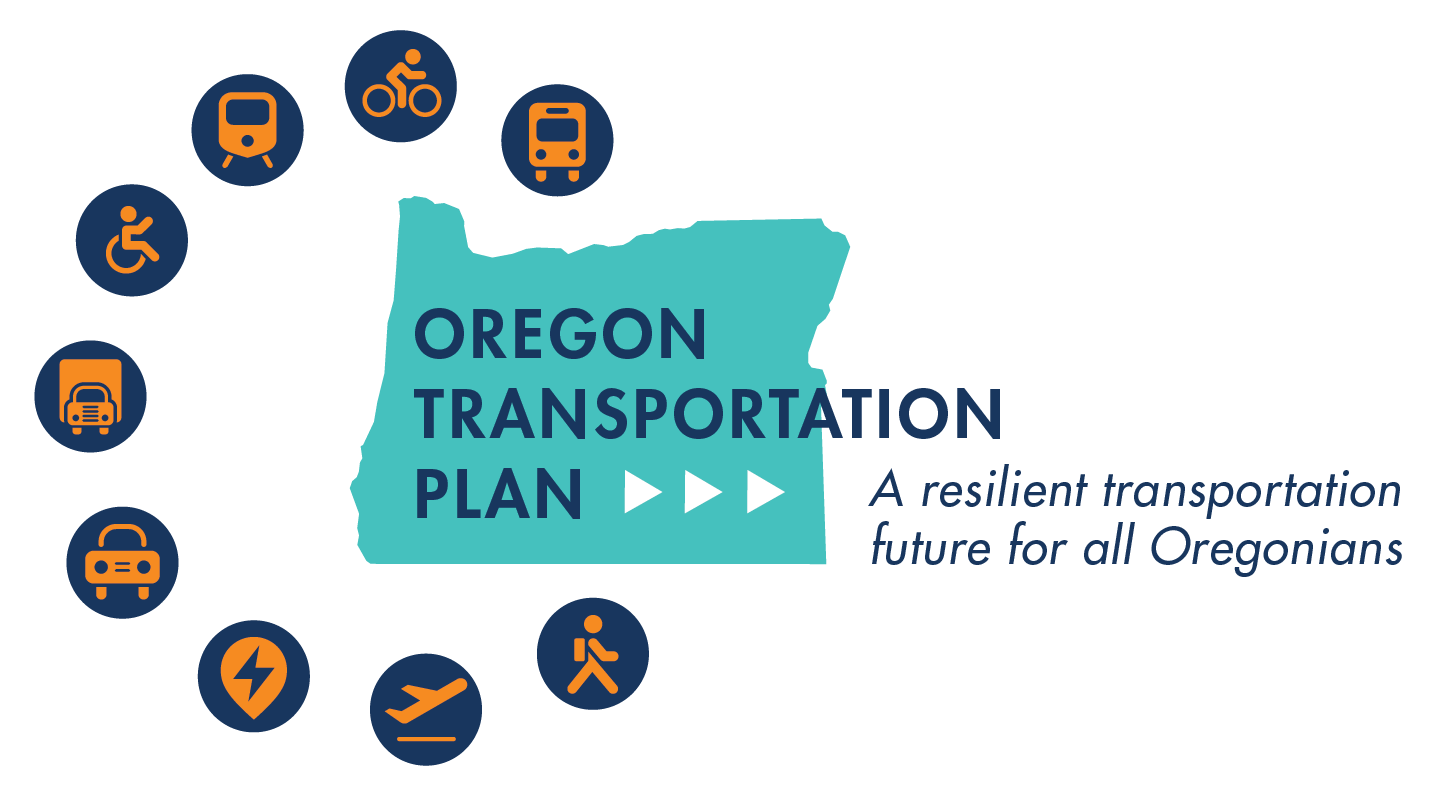




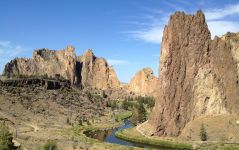


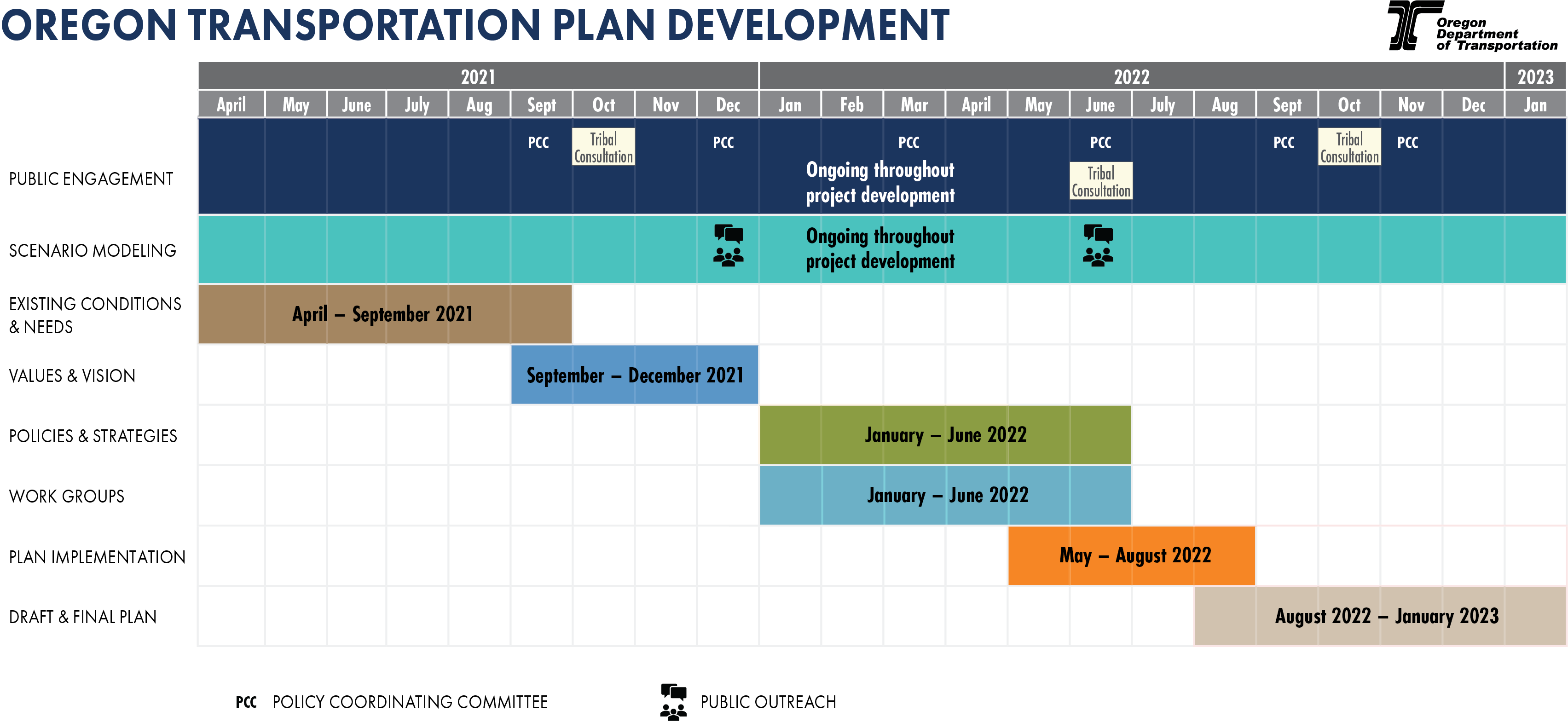

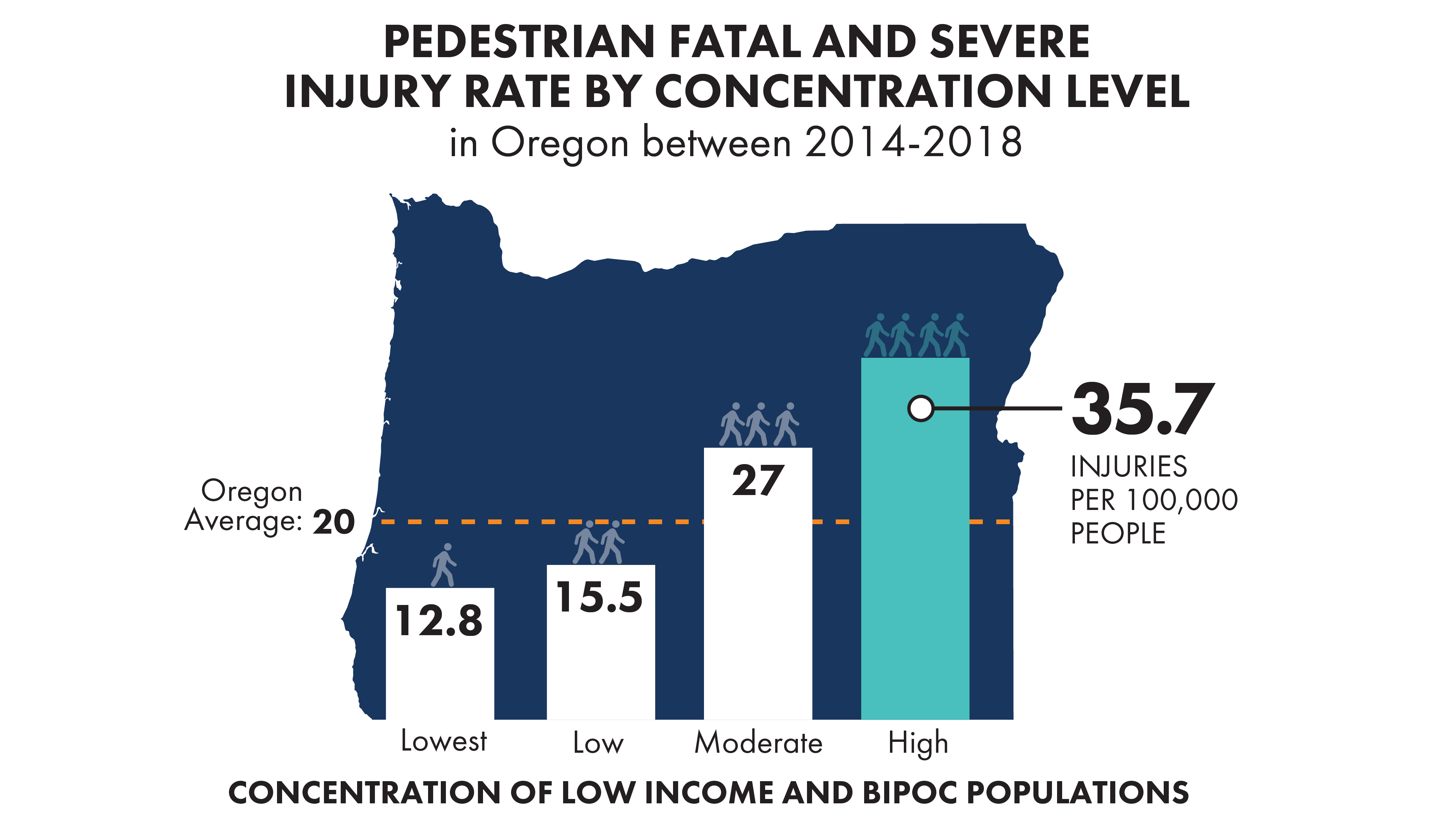
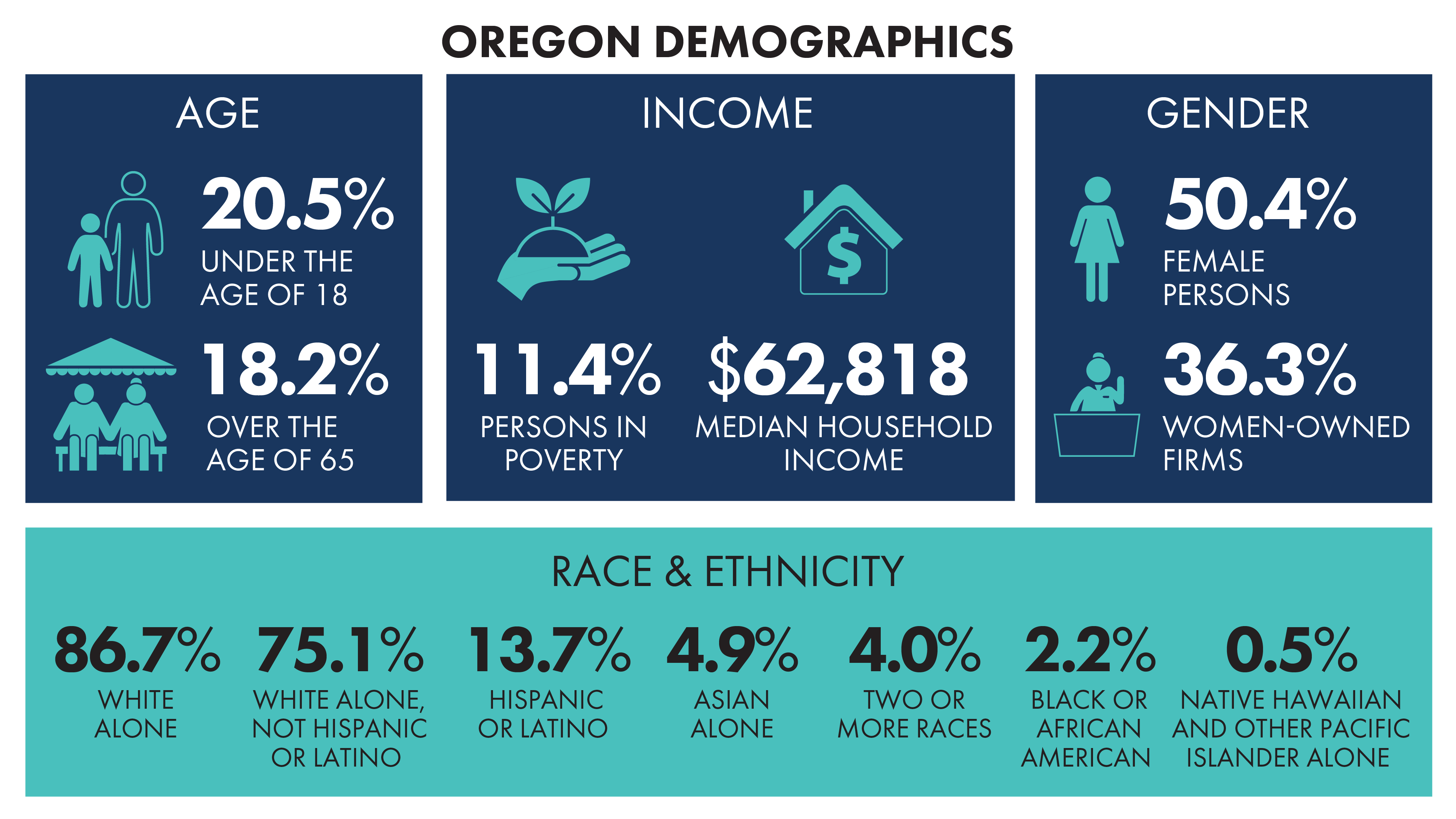
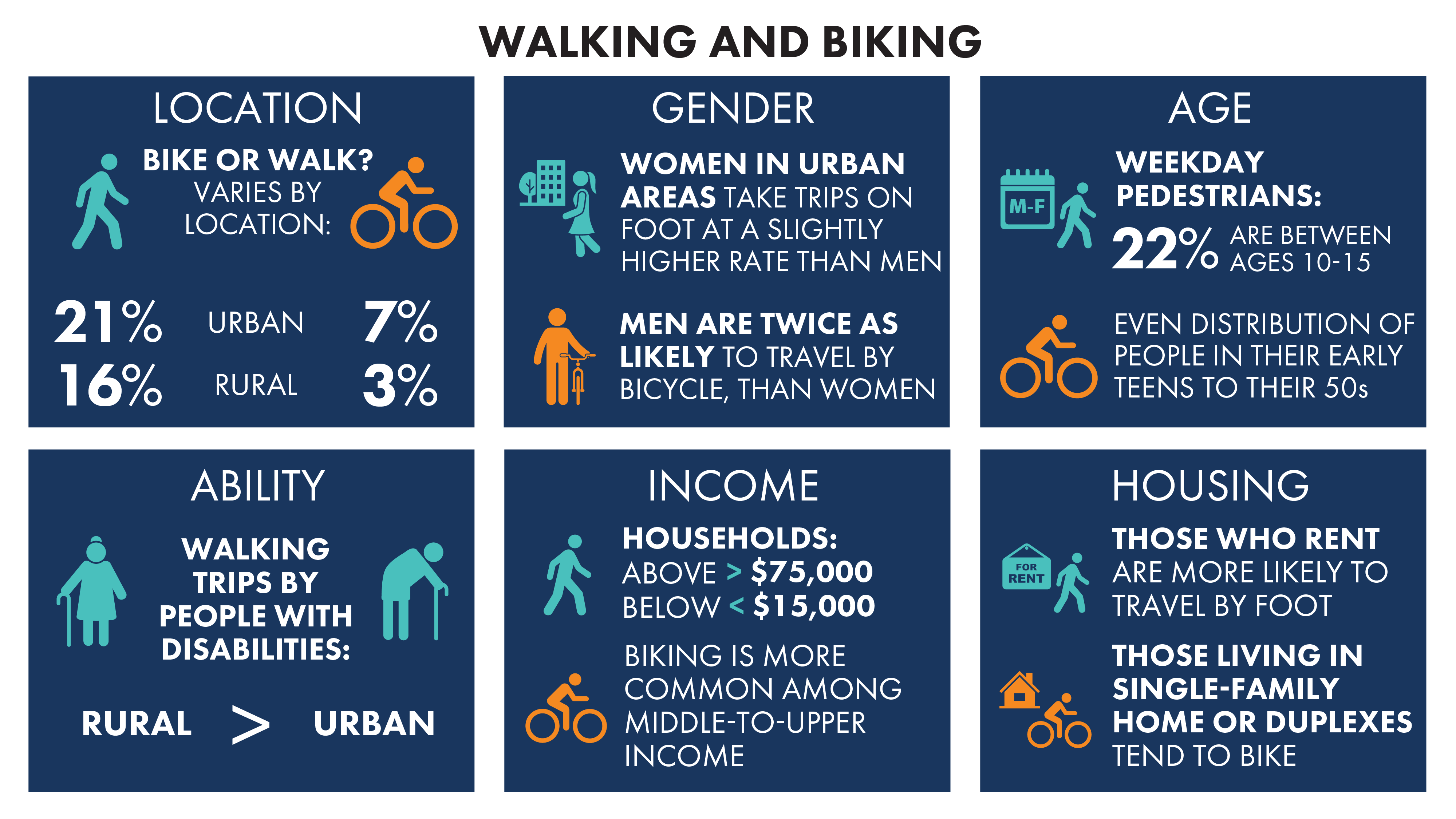
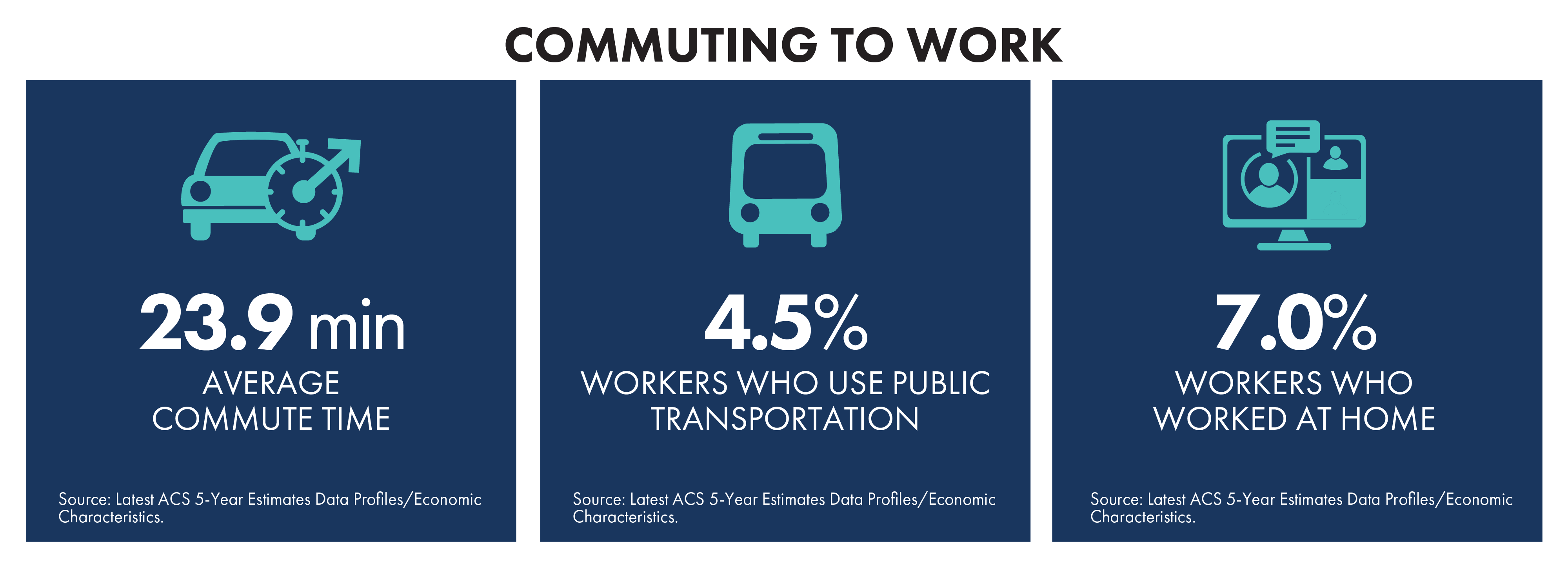
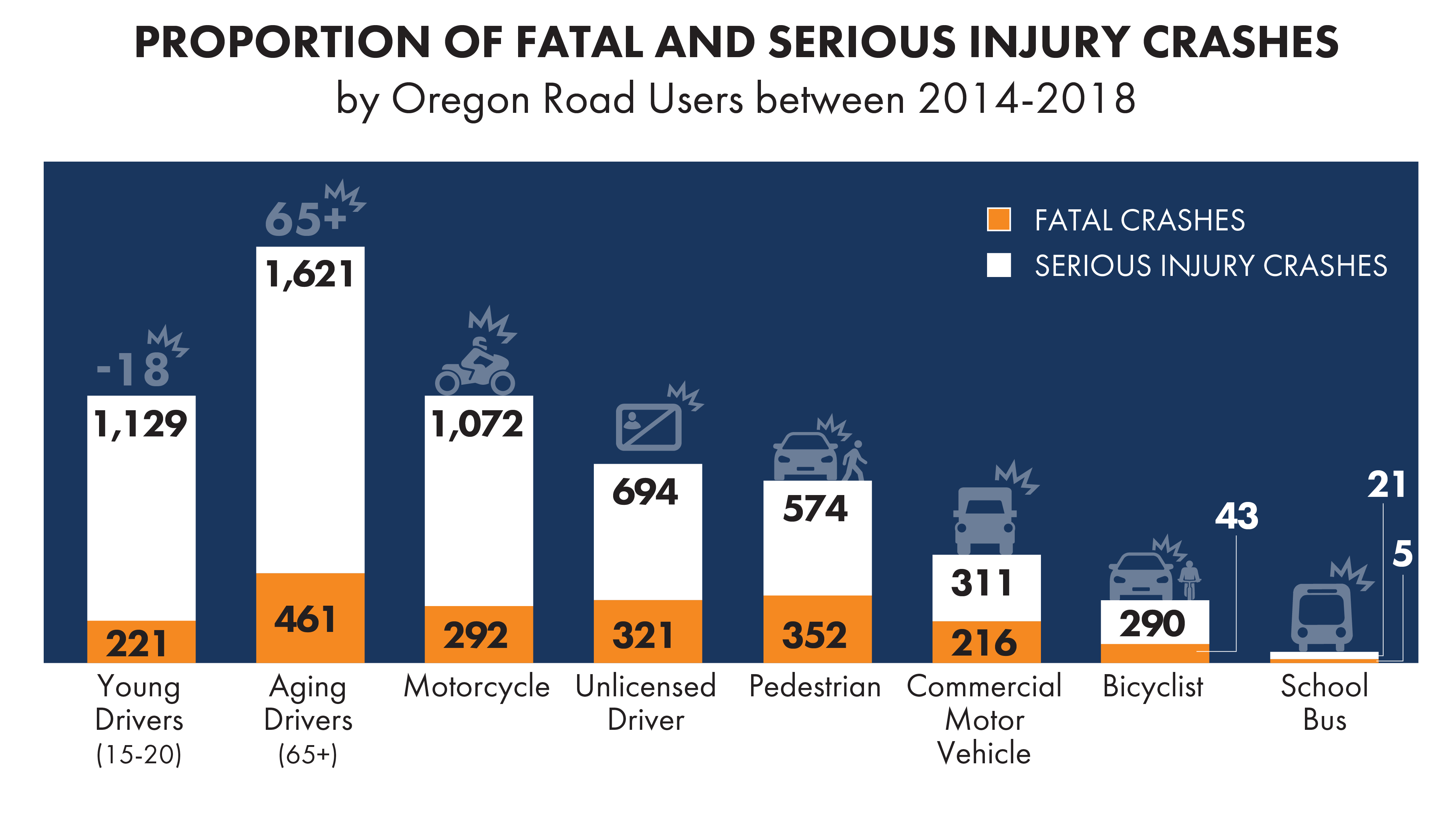
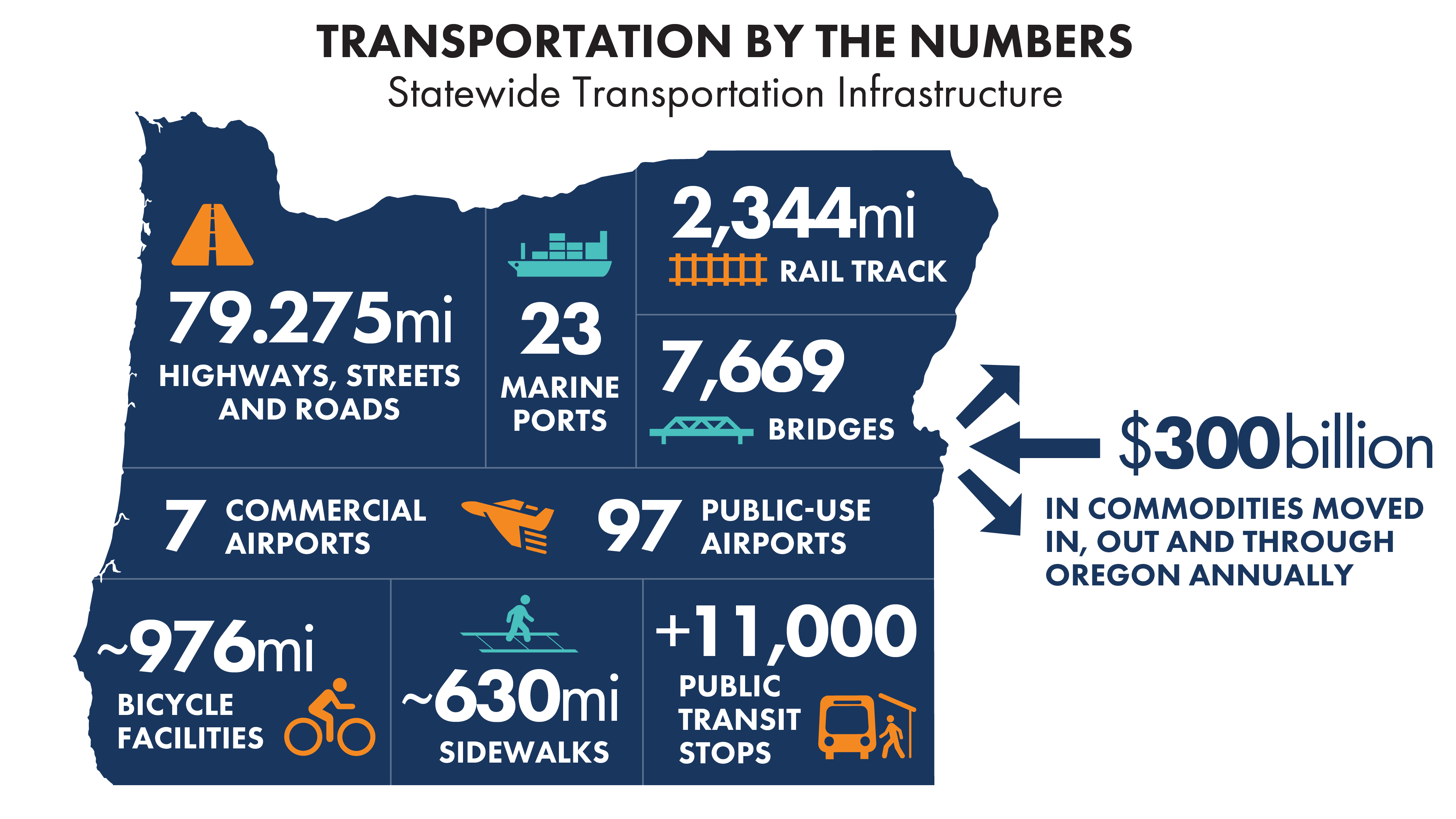
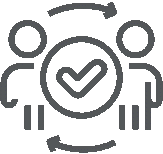 Social Equity
Social Equity  Climate Change
Climate Change Population and Labor Force Changes
Population and Labor Force Changes  Economy
Economy Emerging Transportation Technology
Emerging Transportation Technology Resiliency and Disaster Planning
Resiliency and Disaster Planning Equity
Equity 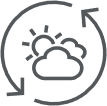 Climate Resiliency and Sustainability
Climate Resiliency and Sustainability Community and Economic Benefits
Community and Economic Benefits 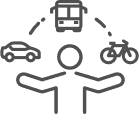 Transportation Choices
Transportation Choices